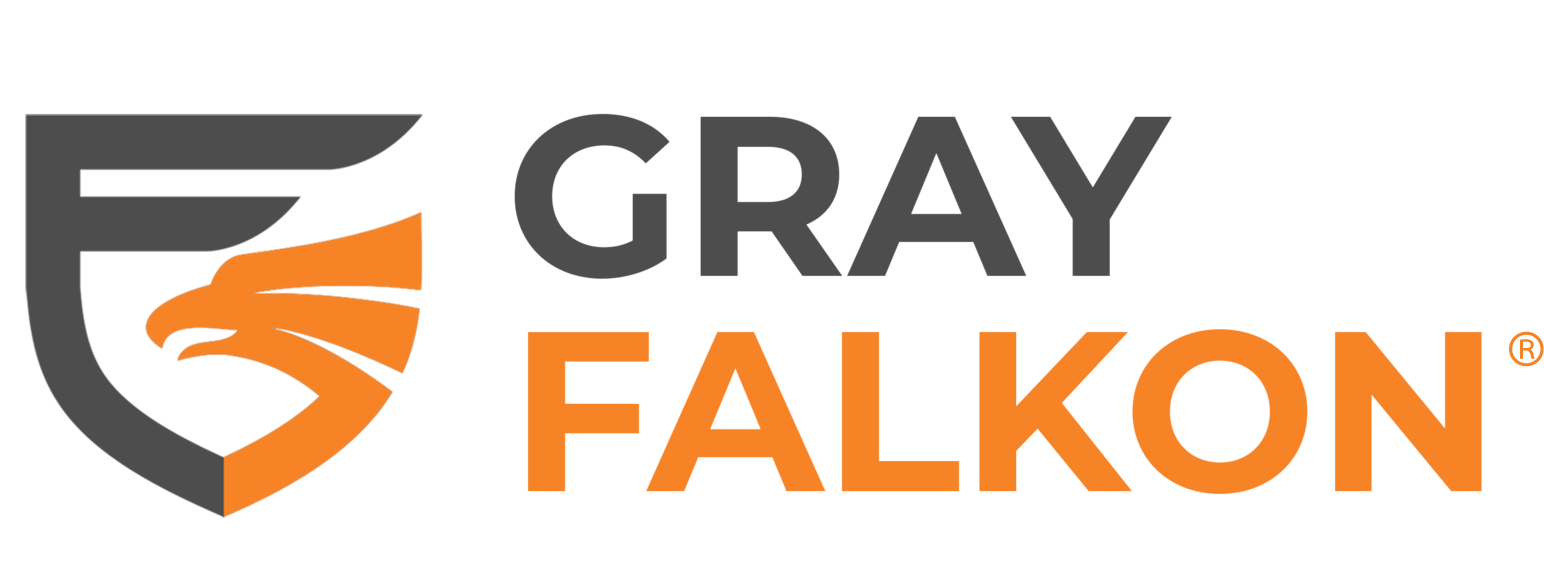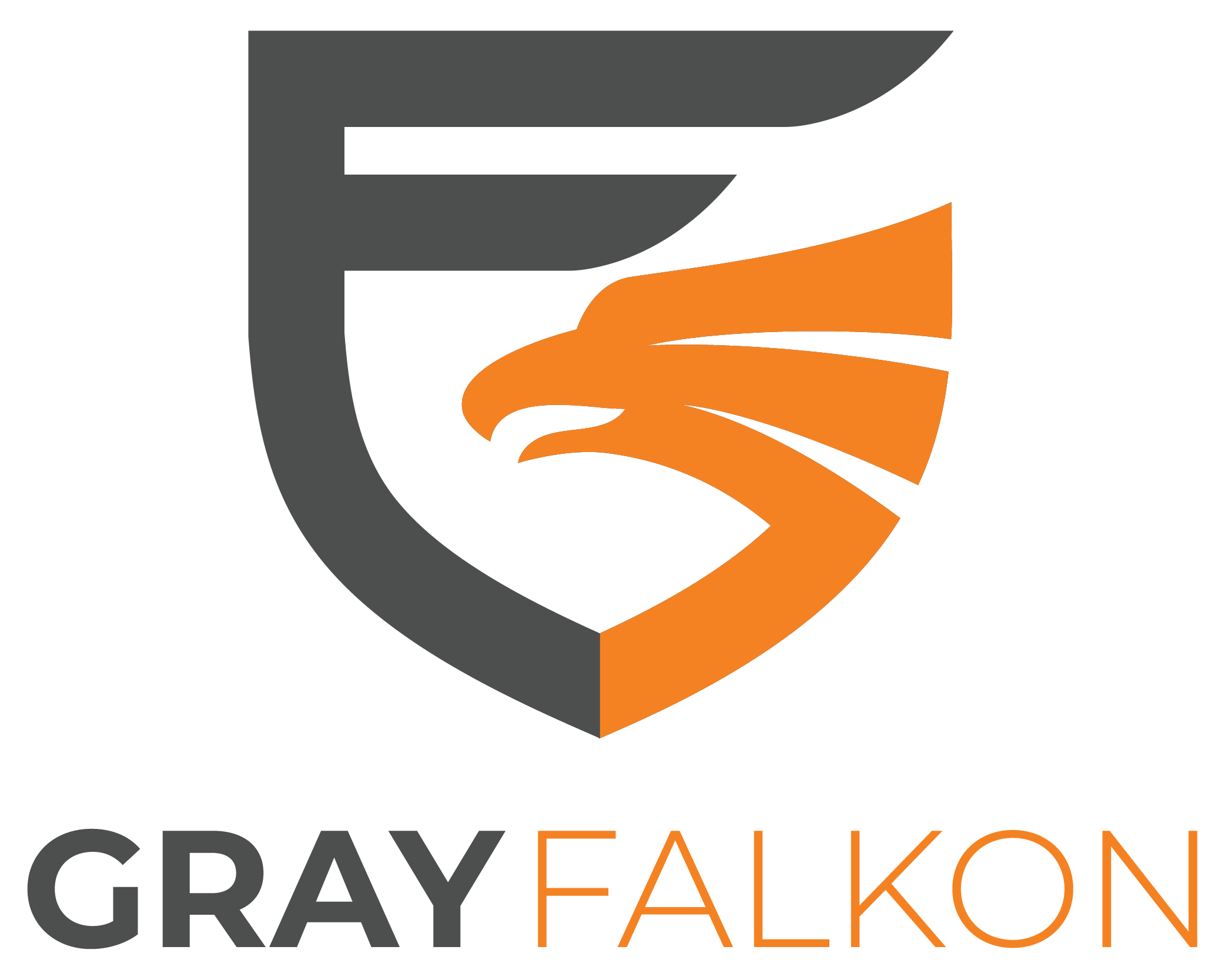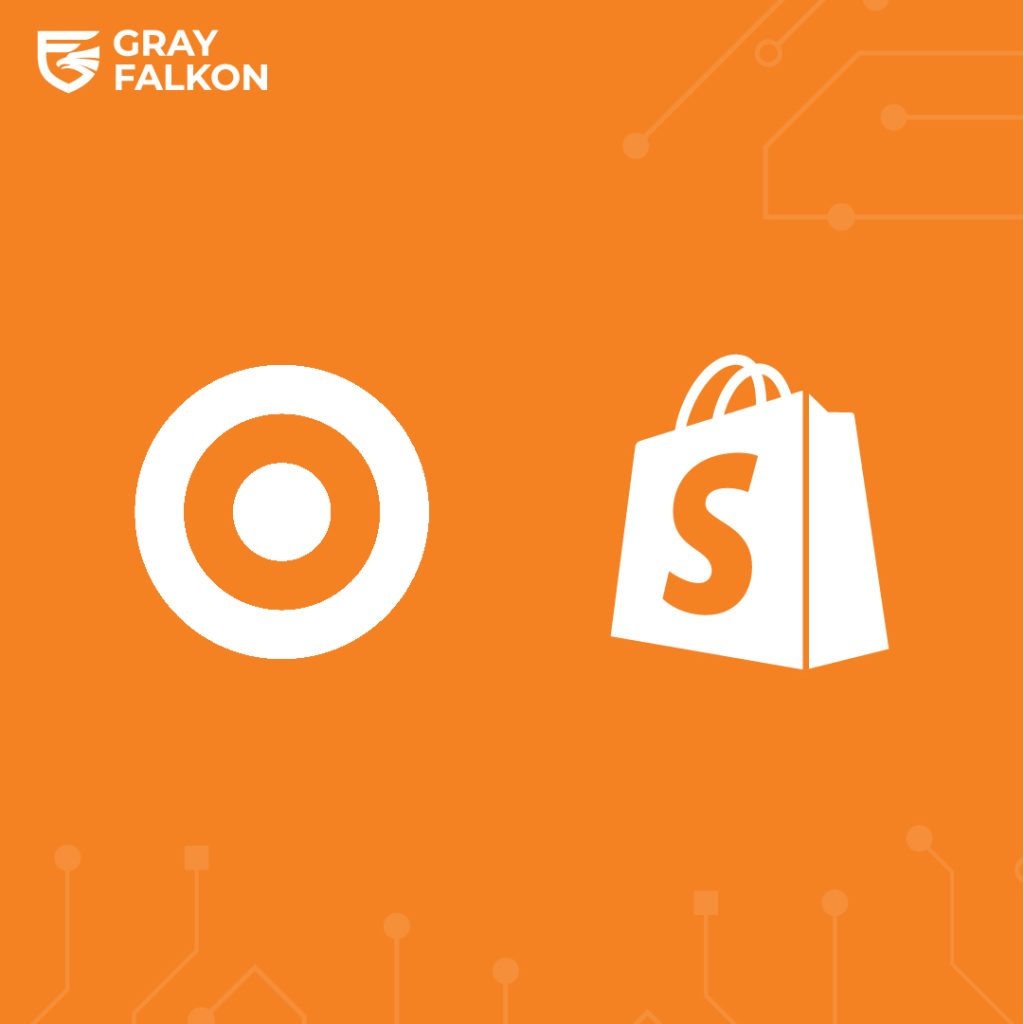
Navigating the challenges posed by third-party sellers on platforms like Amazon and Walmart has become a critical concern for brands. 2023 witnessed an array of complexities in this arena, ranging from unauthorized selling to the impact on brand reputation and consumer trust. As these challenges continue to evolve, solutions like Gray Falkon’s proprietary technology emerge as pivotal tools in safeguarding brands’ interests. Today we’ll dive into the various hurdles brands faced in 2023, the transformative role of Gray Falkon in addressing these issues, and how the eCommerce landscape is shaping up as we move through early 2024.
Common Challenges with Third-Party Sellers
Brands on Amazon and Walmart confronted several significant challenges with unauthorized third-party sellers:
- Gray Market (Unauthorized Selling): The rise of unauthorized selling in the gray market presented major challenges for brands. Unauthorized sellers, often distributing genuine products without brand authorization, disrupted controlled distribution channels. While these products might not have been counterfeit, their unregulated sale still posed significant problems. They often violated Minimum Advertised Price (MAP) policies, led to market saturation, and created inconsistencies in customer experience. This gray market activity diluted the brand’s control over its product presentation and pricing, further complicating the brand’s efforts to maintain a consistent and trustworthy market presence.
- Price Undercutting and Market Disruption: Third-party sellers often engage in price undercutting, offering similar or counterfeit products at lower prices. This practice disrupts the market, leading to diminished brand value and profit erosion for legitimate sellers. It also creates challenges in maintaining Minimum Advertised Price (MAP) policies, a critical aspect we explored in our blog on Understanding and Implementing MAP Policies for eCommerce Success. The prevalence of price wars, further fueled by MAP violations, destabilizes the market and complicates pricing strategies for brands.
- Counterfeit Products Damaging Consumer Trust: The proliferation of counterfeit products posed a significant risk to consumer safety and brand reputation. These products, often of inferior quality, directly infringed on intellectual property rights. The presence of such items in the market not only misled consumers but also compromised the perceived quality and value of the authentic brand. The impact was twofold: it eroded consumer trust and posed potential safety risks, leading to a pressing need for effective solutions to identify and mitigate the spread of counterfeit goods in eCommerce platforms.
- Monitoring and Enforcement Complexities: Brands struggled with the complexities of effectively monitoring product listings across these vast marketplaces. The dynamic nature of online platforms, coupled with the sheer volume of listings, made it difficult to identify and act against policy violations, making enforcement a daunting task.
- Legal and Compliance Issues: Navigating the legal landscape in order to protect intellectual property rights and comply with marketplace policies posed additional challenges. These often required significant resources and expertise, making it a cumbersome and time-consuming process.
These challenges underscored the need for an effective and comprehensive approach to brand protection, one that could adapt to the evolving nature of eCommerce marketplaces.
The Importance of the Buy Box and Equivalent Features in eCommerce
The concept of the ‘Buy Box’ on Amazon and its equivalents on other platforms like Walmart are central to sales dynamics in eCommerce:
- Dominance of the Buy Box on Amazon: The Buy Box is a critical feature on Amazon, often determining the majority of sales for a product listing. It is the default option for customers when adding items to their cart, with the platform choosing which seller is featured based on factors like price, availability, and customer feedback.
- Walmart and Other Retailers: Similar to Amazon’s Buy Box, Walmart and other online retailers have their versions of this feature. For instance, Walmart’s ‘Featured Seller’ spot plays a comparable role in driving sales for the chosen seller on a product page. These features across platforms are crucial in determining which seller gets the lion’s share of the sales.
- Criteria for Winning These Prime Spots: Winning these prime spots, whether it’s the Buy Box on Amazon or the Featured Seller on Walmart, depends on various factors including price competitiveness, seller performance, stock availability, and adherence to platform policies.
- Impact on Brand Strategy: For brands, maintaining control over these prime spots is essential. Losing them to unauthorized or third-party sellers can result in lost sales and potential damage to brand reputation. Particularly, when these sellers engage in practices like undercutting prices or violating MAP policies, it can lead to significant challenges in maintaining brand integrity.
- Strategies for Success: Brands in 2023 increasingly focused on strategic measures like ensuring competitive pricing, consistent stock availability, and high-quality customer service to secure these key positions and protect their brand presence on these platforms.
The struggles posed by unauthorized sellers significantly impacted companies’ ability to control the Buy Box and its equivalents in 2023. These sellers often disrupted the market by engaging in aggressive pricing strategies, sometimes violating MAP policies, and selling counterfeit or unauthorized products. Such practices not only led to unfair competition but also diluted the brand’s value in the eyes of consumers. When these sellers won the Buy Box, it often resulted in negative customer experiences due to inconsistent product quality or service, further damaging the brand’s reputation and customer trust.
This growing challenge underscored the need for robust solutions capable of navigating the complexities of eCommerce marketplaces while protecting the brand’s integrity. It’s here that Gray Falkon’s advanced technology and solutions come into play. With our focus on using AI and automation to combat unauthorized sellers and protect brand presence, Gray Falkon emerged as a critical ally for brands facing these eCommerce challenges.
Gray Falkon’s AI and Automation Technology in Brand Protection
As brands navigated the complexities of third-party sellers on platforms like Amazon and Walmart, Gray Falkon’s AI and automation technology provided a critical solution:
- AI-Powered Seller Profiling: Our technology leverages advanced AI algorithms to create detailed profiles of unauthorized sellers. This profiling enables targeted strategies to combat these sellers effectively.
- Automated Monitoring and Engagement: Our technology offers continuous surveillance of online marketplaces, instantly identifying unauthorized sellers and engaging with them through automated processes. This rapid response is crucial in mitigating the impact of these sellers on the brand’s Buy Box presence and overall market position.
- Marketplace Policy Enforcement: Gray Falkon’s technology adeptly utilizes marketplace policies to file and escalate violations. By doing so, it ensures that unauthorized listings are addressed and removed, thereby protecting the brand’s integrity.
- Adaptability to Marketplace Changes: The AI is designed to adapt to the ever-changing dynamics of eCommerce platforms. This adaptability is key in maintaining effectiveness in brand protection as new challenges and seller tactics emerge.
- Data-Driven Insights and Reporting: We provide brands with comprehensive analytics and reports, offering insights into the effectiveness of our brand protection strategies. This data is invaluable in refining tactics and measuring success against third-party and unauthorized sellers.
By employing Gray Falkon’s AI and automation technology, brands could effectively safeguard their products and reputation against the challenges posed by unauthorized sellers, ensuring their rightful place in the Buy Box and maintaining consumer trust.
Gray Falkon’s Full Deployment Solution
In response to the evolving challenges posed by unauthorized sellers, Gray Falkon offers a comprehensive Full Deployment solution:
- Tailored Strategy Development: Gray Falkon’s Full Deployment begins with building a customized strategy in collaboration with a dedicated Brand Success Strategist. This strategy is tailored to each brand’s unique needs, focusing on increasing online sales and combating seller challenges.
- Identification of Priority SKUs: A key component of the strategy involves identifying priority SKUs (Stock Keeping Units) and ASINs (Amazon Standard Identification Number) that require immediate attention, ensuring that efforts are concentrated where they are most needed.
- Targeted Seller Engagement: Our solution includes a massive push on unauthorized sellers. By testing and optimizing engagement tactics, our technology effectively removes 50% of illegitimate seller problems as quickly as the first two weeks and up to 95% over time, significantly reducing the impact on the brand’s presence and Buy Box control.
- Continuous Surveillance and Protection: The Full Deployment solution offers relentless protection through continuous monitoring of marketplaces. This includes instant engagement with new unauthorized sellers and escalating campaigns against persistent violators, ensuring ongoing brand safety.
- Data-Driven Decision Making: Gray Falkon provides brands with interactive dashboards to track progress, identify trends, and capture detail and impact of focus areas. This enables brands to make informed decisions based on real-time insights into their brand protection efforts.
Gray Falkon’s Full Deployment solution represents a holistic approach to brand protection, combining strategic planning with advanced technology to effectively combat the challenges posed by illegitimate sellers in eCommerce.
Looking Ahead: eCommerce Brand Protection in 2024 and Beyond
The landscape of eCommerce brand protection is poised for further evolution:
- Continued Rise of AI and Automation: The use of AI and automation technologies like those offered by Gray Falkon will become even more prevalent. These technologies will become more sophisticated, offering enhanced detection and response capabilities against unauthorized sellers.
- Greater Emphasis on Proactive Strategies: Brands will increasingly adopt proactive strategies rather than reactive ones. This shift will involve not just monitoring and enforcement but also engaging in preventive measures to safeguard against potential infringements.
- Enhanced Collaboration with Marketplaces: There will likely be a stronger collaboration between brands and major eCommerce platforms. Partnerships will aim to create more robust consumer experiences and improve business operations..
- Adaptation to New Market Dynamics: As eCommerce continues to grow and evolve, brand protection strategies will need to adapt to new consumer behaviors, market trends, and technological advancements.
- Consumer Awareness and Education: Brands and platforms will invest more in consumer education about the importance of buying from authorized sellers. This effort will be crucial in building and maintaining consumer trust in the authenticity and quality of products purchased online.
The landscape of brand protection in eCommerce is rapidly changing, and companies like Gray Falkon are at the forefront, offering solutions that evolve in tandem with these changes, ensuring that brands remain protected in an increasingly complex digital marketplace.
Partner with Gray Falkon
Navigating the challenges posed by unauthorized sellers on platforms like Amazon and Walmart has become a critical aspect of eCommerce brand protection. In 2023, brands faced significant hurdles from unauthorized selling, counterfeit products, and the complexities of maintaining control over the Buy Box. Gray Falkon’s AI and automation technology, particularly through its Full Deployment solution, has proven to be an indispensable ally in this battle.
As we move into 2024, the landscape of eCommerce continues to evolve, bringing new challenges and opportunities. Brands must remain vigilant and proactive, utilizing advanced solutions like those provided by Gray Falkon to stay ahead of the curve. The future of brand protection in eCommerce will be defined by the strategic use of technology, collaboration, and innovation.
Embrace the advanced solutions we offer and ensure your brand is well-equipped to navigate the complexities of the modern eCommerce landscape. Schedule a demo to learn more about how we can help you safeguard your brand’s future in the digital marketplace.





